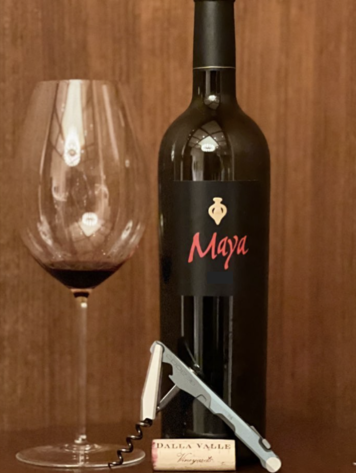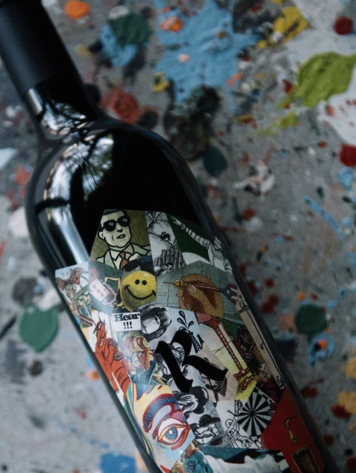99pts James Suckling
Extremely perfumed and floral with lavender, lilacs and violets to the sweet, ripe berries, such as blackberries and blackcurrants. Some slate and graphite, too. It’s full-bodied, yet ever so balanced and refined, with super fine tannins that last for minutes. Fresh herbs, such as bay leaf and lemon grass highlight the dark fruit. The quality of tannin is exquisite with wonderful polish and refinement. Lasts for minutes. So wonderful to taste now, but better after 2026.
98pts Wine Advocate
Very deep garnet-purple in color, the 2018 Opus One soars out of the glass with bright, bold boysenberries, warm cassis and ripe, juicy black plums notes, plus emerging nuances of lilacs, oolong tea, cinnamon stick, tilled soil and black truffles. Medium to full-bodied, the palate is packed with tightly wound layers of crunchy black fruits, supported by firm, grainy tannins and fantastic freshness, finishing with lifted fruitiness and on a lingering mineral note.
97pts Jeb Dunnuck
The 2018 Opus One is a blend of 84% Cabernet Sauvignon, 6% Petit Verdot, and the rest Merlot and Cabernet Franc. This deep purple-hued effort leans to lively, fresher side of the vintage but has a brilliant, utterly classic style in its crème de cassis and blue-tinged fruit as well as notes of lead pencil, candied violets, damp earth, and chocolate-like nuances. With a Pomerol-like elegance and purity, it's medium to full-bodied and has wonderful tannins, flawless balance, and a great finish. It plays in the finesse-driven end of the spectrum yet is concentrated and seamless, with serious length. It offers pleasure today but should benefit from 4-5 years in the cellar, and my money is on it evolving for 30 years or more.
95pts Decanter
The 2018 Opus One is incredibly elegant and polished, right out of the bottle. Silky tannins and lifted, perfumed aromatics add to an impression of finesse that distinguishes the 2018 from some of the preceding vintages in a pretty big way. It will be interesting to see if the 2018 gains body with a bit of time in bottle. It is pretty rare for Opus One to be so approachable at this stage.
94pts Wine Spectator
The fruit is decidedly restrained in style, without the vivid punch typical of the vintage, but the gently mulled currant, cherry and bitter plum flavors are well-delineated and persistent, while notable savory, thyme and tobacco leaf notes play a prominent role alongside. There's a racy beam of acidity piercing through it all and a lingering iron note on the finish. An excellent example of the style. Cabernet Sauvignon, Petit Verdot, Merlot, Cabernet Franc and Malbec.
History
Opus One is a partnership founded by Baron Philippe de Rothschild of Chateau Mouton Rothschild in Pauillac, France, and renowned Napa Valley vintner, Robert Mondavi. Producing luxury wines from its Napa Valley vineyards, the partnership made its first vintage in 1979 and has made wine at Opus One since 1991. The facial profile of the two founders is visible on their iconic label.
The essence of time is expressed in Opus One wine by the character of each vintage. Place, often defined as terroir, represents the geography, the climate and the essential human element which is captured in the wine’s balance between power and finesse, structure and texture.
Guided by the vision of our founders, winemaker Michael Silacci combines intuition and technical acumen with the dual perspective of viticulturist and winemaker. From tasting berries to careful sorting and extended aging in new French oak barrels, each stage of the winemaking process is afforded the same meticulous consideration and attention. After 18 months, the Opus One wine is bottled and held an additional 15 months until release on October 1st each year.
The Opus One Winery
Rising gracefully from the vineyards, Opus One winery stands in subtle celebration of the land and the open space that surrounds the estate. It remains an ongoing testament to the founders’ vision of a singular wine that transcends generations.
The estate vineyards of Opus One, comprised of four parcels, sit in the western portion of the famed Oakville AVA in Napa Valley. Two parcels, totaling 100 acres, are within the renowned To Kalon Vineyard. These are complemented by the combined 70 acres of the Ballestra and River parcels, which envelop the winery. In the vineyards, hand-harvesting and other traditional approaches are taken wherever they work best. When modern techniques benefit the winegrowing process, they are researched, evaluated and integrated into practice







